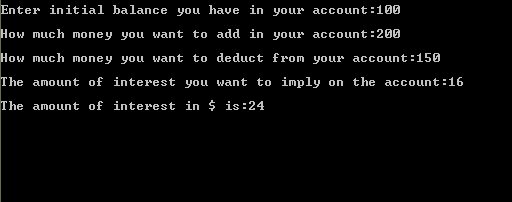Applying inheritance in C++ programs
Submitted by moazkhan on Wednesday, July 30, 2014 - 12:20.
Applying inheritance in C++ programs
In this tutorial you will learn: 1. How to use inheritanace in program? 2. The advantages of inheritance? 3. How base and derived class functions work together? 4. C++ syntax As told before inheritance is very useful in terms of reliability and reuse of the code. In this part of the tutorial I have made a small program to demonstrate how can we make better use of the inheritance by implementing it in some practical situation like account management of some client of a bank. There are two type of accounts in bank, one is the current account and other one is the savings account. The current account only provides the features of credit(adding money) and debit( deducting money) from the account while the saving account also provide users with a feature of interest rate, in this case some amount of money according to the interest percentage is given to the customer above his actual amount(balance). Saving account class is also the current account as we can debit and credit the money from it as well so we can make the current account as the base class while the savings account class as the derived class(because additional functionality is added in the saving account). Here current account is named as “Account” while saving account as “SavingsAccount”. Lets start with the code. strong>Inheritance Basic Step: Open Dev C++ then File > new > source file and start writing the code below.

Add new comment
- 843 views

